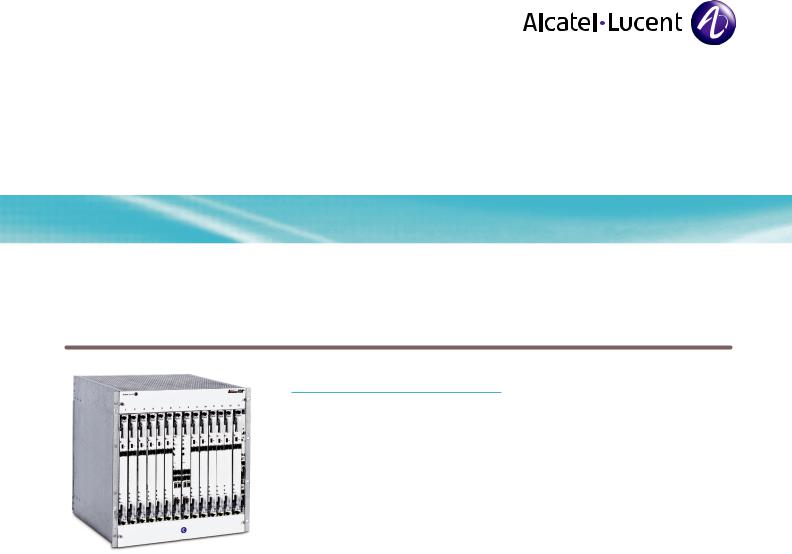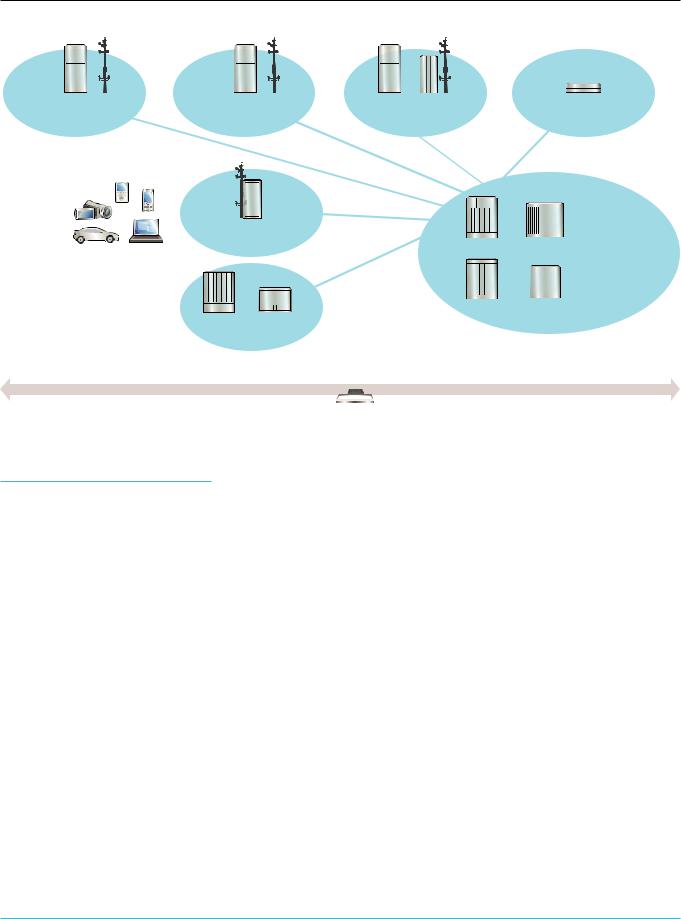Alcatel-lucent 5780 DSC DATASHEET

Alcatel-Lucent 5780 DSC
DY N A M I C S E R V I C E S CO N T R O L L E R | R E L E A S E 3 . 0
The Alcatel-Lucent 5780 Dynamic Services Controller (DSC) is a highly scalable, carrier-grade converged platform that provides the Policy and Charging Rules Function (PCRF) for 3G and 4G wireless networks (as per the
3rd Generation Partnership Program [3GPP] Releases 7, 8, and 9) as well as support for wireline networks.
Product overview
The 5780 Dynamic Services Controller (DSC) is paramount in delivering personalized services while monetizing the service provider’s network with scale and velocity. The 5780 DSC is a 3GPP-certified Policy and Charging Rules Function (PCRF) at its core, supporting 3GPP Releases 7, 8,
and 9. The 5780 DSC also supports residential wireline access by offering a RADIUS/Change of Authorization (CoA) interface to the Broadband Network Gateway (BNG) and the Broadband Remote Access
Server (BRAS).
The 5780 DSC is integrated with the 9900 Wireless Network Guardian (WNG), thus enabling Intelligent Traffic Management (ITM). ITM allows service providers to understand the new breed of broadband traffic (i.e., network intelligence) that wireless networks face, while dynamically identifying and addressing anomalous events that could impact the subscriber’s Quality of Experience (QoE).
The 5780 DSC is part of the Alcatel-Lucent Ultimate Wireless Packet Core (UWPC), leveraging a deep understanding of integrating with key, charging and enforcement elements such as the Gateway GPRS Support Node (GGSN) and Packet Data Network (PDN) Gateways (PGWs). The 5780 DSC supports both 3G and 4G deployments and can be deployed simultaneously in wireline environments. The 5780 DSC is managed by the 5620 Service Aware Manager (SAM), which is also used to manage all of Alcatel-Lucent’s packet core elements. The 5780 DSC can be purchased pre-integrated with the UWPC or it can also be easily deployed in a multivendor environment due to its comprehensive support of all major standardized interfaces. Figure 1 shows a network view of the 5780 DSC.

Figure 1. The 5780 DSC network view
2.5G/3G/3.5G networks
BSC |
RNC |
RNC PSDN/HA |
9900 WNG |
GSM/GPRS/EDGE
eNodeB |
|
|
4G |
SGW |
MME/SGSN |
5780 DSC
Converged
Policy Manager
BNG PGW/GGSN
DSLAM Aggregation switch/router
Converged packet core
Wireless access
Converged service-aware network management
5620 SAM
Product detail
The Alcatel-Lucent 5780 DSC is the decision engine that enables the authorization of network resources to be applied to a service data flow (SDF), the gating of packets from specific SDFs, QoS control for specific SDFs, and flow-based per-SDF charging. The 5780 DSC operates throughout the entire lifecycle of the user interaction with the mobile network. It operates during initial User Equipment (UE) attachment, and during the establishment of additional resources to support application session establishment, as well as performs dynamic session modification for established sessions. The 5780 DSC also supports a RADIUS/ CoA interface and interacts directly with a BNG or BRAS to provide wireline policy management concurrently with its wireless offering.
The Alcatel-Lucent 5780 DSC’s state-of- the-art decision engine provides wireless and fixed network service providers with the capabilities to map business demands and network constraints into easy-to-manage network policy rules. The decision engine uses a set of predefined operator-configured service policies combined with network (device-type, access type, location, intelligence), subscriber (service tier, pre-paid, credit balance, entitlements), system (state, time of day) and application information (service description, traffic parameters) that it obtains from its various interfaces to maximize the effectiveness of its policy decisions. Once policy decisions are dynamically synthesized by the decision engine, they are formulated into network consumable rules and sent through the Gx
(or RADIUS/CoA) interface to the PCEF/DPI (or BNG/BRAS) where they are instantiated and enforced for per-device per-application data plane treatment.
The Alcatel-Lucent 5780 DSC implements PCRF as per the 3GPP policy and charging (PCC) architecture Releases 7, 8, and 9 and supports all of the standard interfaces defined therein. The 3GPP-defined Rx interface
allows interaction with the Application Function (AF), thereby providing detailed service description information from the IP Multi-Media Subsystem (IMS)-based applications. The RESTful and Web Service (WS) interfaces allow Internet-based third-party applications to interact with the 5780 DSC to negotiate the proper treatment of their underlying per-application packet flows. These interfaces are key parts
of the Alcatel-Lucent Application Enablement (AE) offering, allowing service providers to break into the value chain that is normally reserved for application and content providers (ACPs). Figure 2 shows a logical architectural view of the Alcatel-Lucent 5780 DSC and the standard interfaces that it supports.
2 Alcatel-Lucent 5780 DSC | Release 3.0 | Data Sheet
